Many people in Europe think that bamboos grow in monoculture plantations without any wildlife. Yet, natural bamboo forests form the habitat for a number of iconic mammal flagship species. The following list is not exhaustive, but covers the main large animals in bamboo forests around the world.
Bamboo is also the habitat for a large number of birds, and bamboos can host reptiles, amphibians and many small invertebrates.

Bamboo forest in Zhejiang Province, China
Asia
There are a number of specialized animal species in Asia that depend upon bamboo. Other mammals like the Asiatic black bear (Ursus thibetanus) or the Asian elephant (Elephas maximus) may eat bamboo shoots or leaves from time to time, but they are not dependent on bamboo for survival.
Giant Panda,
The giant panda (Ailuropoda melanoleuca) lives in a few mountain ranges in central China, mainly in Sichuan Province, but also in neighbouring provinces of Shaanxi and Gansu, and the Chinese Government has declared several reserves and scenic parks as sanctuaries for the animal. The current habitat is much smaller than the original panda range, and WWF estimates that the bears once roamed far and wide.
Bamboo shoots and leaves make up more than 99% of the diet of the Giant Panda. It is listed by IUCN as a vulnerable species, and wild population estimates vary from 1600 to 2,500. The Government has recently announced the creation of a panda national park, to bring together the different conservation measures under one management authority.
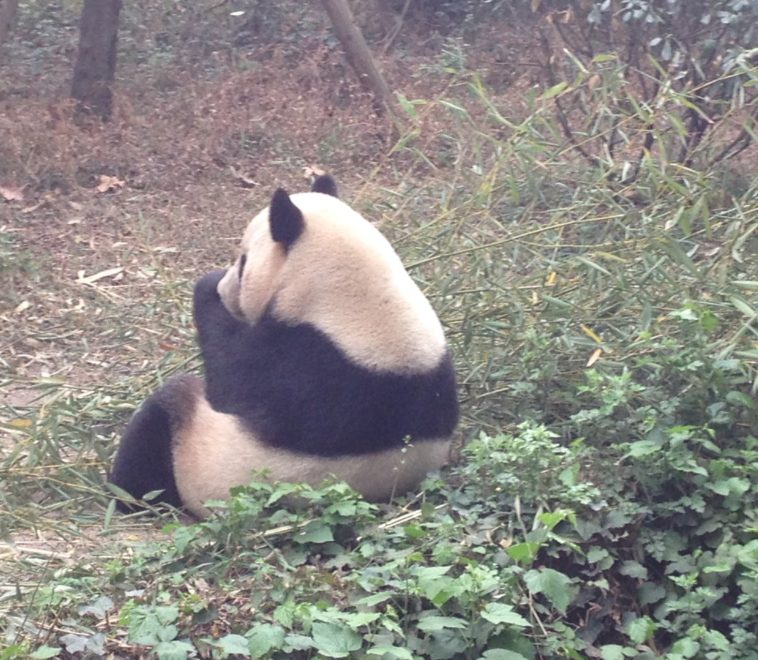
Giant panda in Chengdu Panda Centre, China
Red Panda
The Red Panda (Ailurus fulgens) is also vulnerable according the IUCN Red List of Threatened Species. The distribution of the red panda in the wild is poorly known, but its range is known to include Nepal, India, Bhutan, Myanmar, and southern China.
Unlike the giant pandas that spend most of their time plodding around on the ground looking for food, red pandas spend about 90 percent of their time in the trees. In fact, the two species are not closely related
Red panda diet consists chiefly of young leaves and shoots of bamboo, yet also includes fruit, roots, succulent grasses, acorns, lichens, bird eggs, insects, and grubs. Habitat loss is considered to be the biggest threat to this species, while poaching is the next biggest threat in the Indian portion of its range and in areas of China and Myanmar.
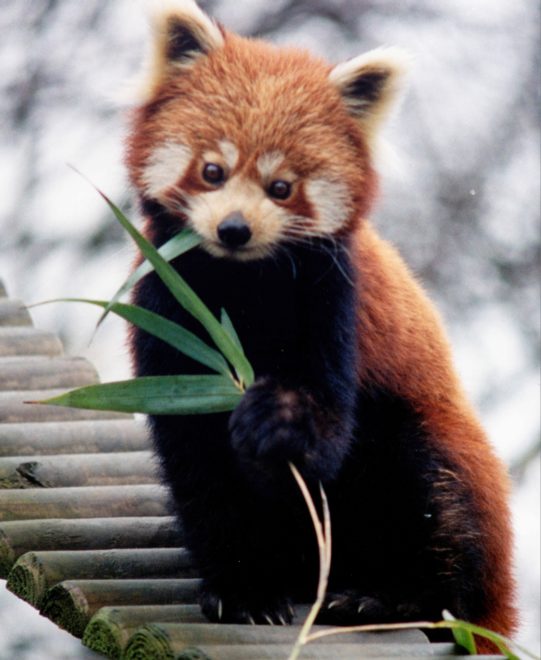
Asia Bamboo Rats
There are four species of bamboo rat and all are found in South Asia, Southeast Asia and East Asia.
- The Chinese bamboo rat, Rhizomys sinensis, lives in central and southern China, northern Burma, and Vietnam;
- The hoary bamboo rat, R. pruinosus, is found in a range from Assam in India to southeastern China and the Malay Peninsula;
- The Sumatra or large bamboo rat, R. sumatrensis, lives in Yunnan in China, Indochina, the Malay Peninsula and Sumatra.
- The lesser bamboo rat, Cannomys badius, found in Nepal, Assam, northern Bangladesh, Burma, Thailand, Laos, Cambodia and northern Vietnam.
They are all bulky, slow-moving rodents that live and forage in extensive burrow systems and rarely spend much time above ground. They feed principally on bamboo and live in dense bamboo thickets. All bamboo rats are considered agricultural pests as they eat the roots of main food crops.
Bamboo bat
The lesser bamboo bat (Tylonycteris pachypus, 3.5 cm) is the size of a bumblebee. They are found throughout Southeast Asia from Bangladesh to southern China and Indonesia and also in southern and eastern India. It inhabits deciduous forests with extensive areas of bamboo growth, at altitudes from sea level to 1,260 m. The bat roosts in bamboo shoots or between nodes of mature bamboo (preferably Gigantochloa scortechinii), which it enters through holes created by beetles.
Africa
African Elephants eat bamboo, and several other species can occasionally be found in the bamboo forests of Africa, but the following are species that depend on bamboo for survival.
Mountain Bongo
The eastern or mountain bongo (Tragelaphus euryceros Isaaci) of the Aberdare Mountains and Mount Kenya in Kenya is considered by IUCN to be ‘Endangered’. This large forest antelope spends the wet season in cloud forests lower down the mountains, but migrates to spend the dry season in the dense Yushania alpina bamboo thickets and open moorland 1000 m further up the slopes.
Bongos also live in West and Central Africa and each of the three population ranges has shrunk in size due to habitat loss and hunting.
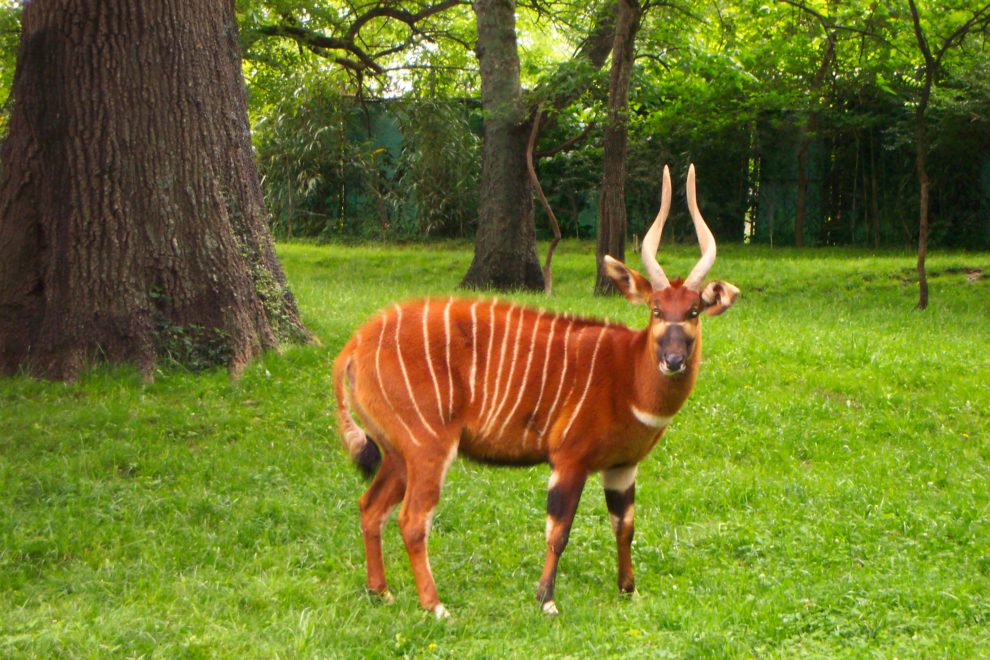
Bongo in Nashville Zoo. Downloaded from Wikipedia
Mountain Gorilla
Mountain gorillas (Gorilla Berengei), which are classed as endangered by IUCN, inhabit montane and bamboo forests in the eastern Democratic Republic of the Congo, Rwanda and southwestern Uganda. They eat large amounts of vegetation from more than 70 different plant species, including bamboo. When the bamboo plant sprouts in June and November, bamboo shoots can make up to 90 per cent of a gorilla’s diet.
The most serious threat to gorillas is habitat loss. The rich volcanic soils around the Virunga National Park shared by Rwanda, Uganda and the Democratic Republic of Congo is as highly valued as farming land. This results in occasional confrontations between Mountain Gorillas and farmers with the former foraging for bamboo in the “bamboo zone” lying adjacent to human settlements and farms. Several conservation and development programs are in place to try and address these wildlife-farming challenges, but often bamboo is not included.
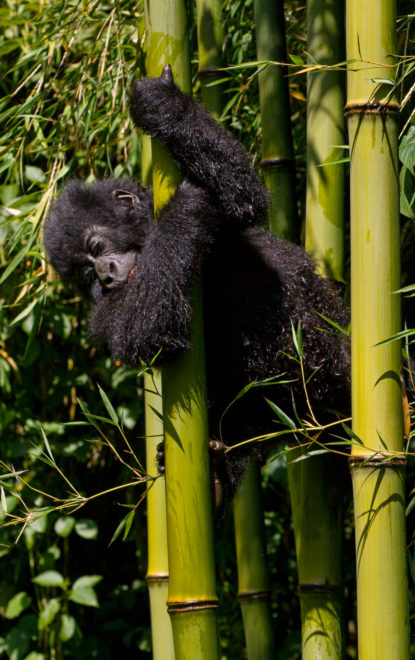
A baby mountain gorilla in Rwanda. Credit: INBAR
Bale Monkey
The Bale Monkey (Chlorocebus djamdjamensis) is endemic to the highlands of Ethiopia, east of the Ethiopian Rift Valley in the Bale Mountains, where they are found in bamboo forests at high elevations from 2,400 to 3,000 metre above sea level.
The species is listed as Vulnerable in the IUCN Red List of Threatened Species, as the range of this species is less than 20,000 km² with severe fragmentation and there is continuing decline due to ongoing habitat loss and degradation.
Madagascar Lemurs
A number of Madagascar’s woody bamboos are fundamental to the survival of three recognized species of bamboo lemur, each occupying a different habitat in Madagascar: the grey bamboo lemur (Hapalemur griseus), the greater bamboo lemur (Hapalemur simus) and the golden bamboo lemur (Hapalemur aureus). All these species live in forests with a high proportion of bamboo, and various parts of bamboo plants make up a large part of their diets.
(IUCN) considers lemurs to be the world’s most endangered mammals, noting that up to 90% of all lemur species are faced by the threat of extinction in the wild within the next 10 to 15 years. This is due to habitat destruction and hunting.
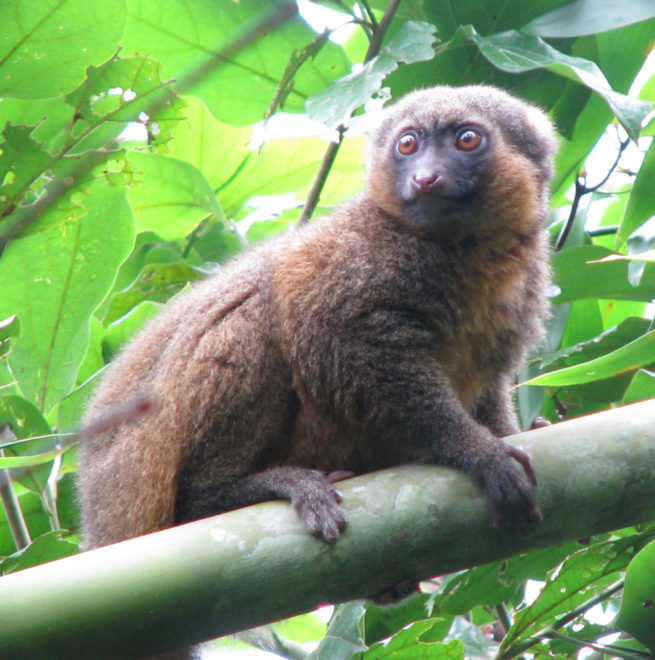
Golden Bamboo Lemur. Downloaded from Wikipedia
Americas
Throughout the Americas, bamboo stands provide habitat and food for a wide range of mammals, birds, amphibians and invertebrates, many of which are of conservation concern. In South America, especially at higher altitudes and in the Atlantic Forest zone, several important mammals feed on bamboo.
Bear
The spectacled bear (Tremarctos ornatus), that is found in the Andes Mountains of South America, is classified as ‘Vulnerable’ by IUCN and feeds opportunistically on young shoots of bamboo.
Tapir
The ‘Endangered’ mountain tapirs (Tapirus pinchaque) eat considerable amounts of grasses, bamboo, sedges and bromeliads in their high-altitude habitats. Its habitat is the cloud forests in Colombia, Ecuador, and the far north of Peru. The ‘Vulnerable’ lowland tapir (Tapirus terrestris), which feeds on grasses and aquatic plants in the Amazon, consumes substantial amounts of bamboo leaves and twigs in the Atlantic Forest.
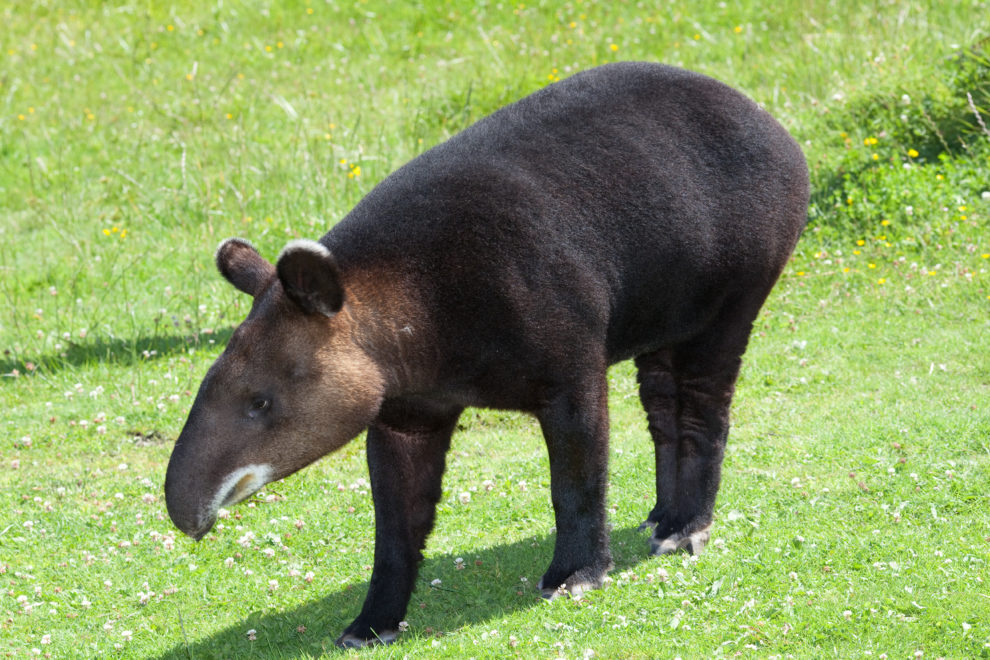
Mountain tapir. Photo by David Sifry.
South America Bamboo Rat
At least four South American rodent species known as bamboo rats (Dactylomys dactylinus, D. peruanus and D. boliviensis in Amazonia and Kannabateomys amblyonyx in the Atlantic Forest) use bamboo patches as their principal habitat and also eat bamboo.
Panther
Canebrakes, dense stands of Arundinaria gigantea, were once widespread throughout the southeastern portion of the United States. The fragmentation of the Canebrakes has created challenges to the survival of the Florida panther (Puma concolor subsp. coryi).

0 comments
Write a comment